Horned figures from cult of a Mesopotamian moon god discovered in biblical-era fort
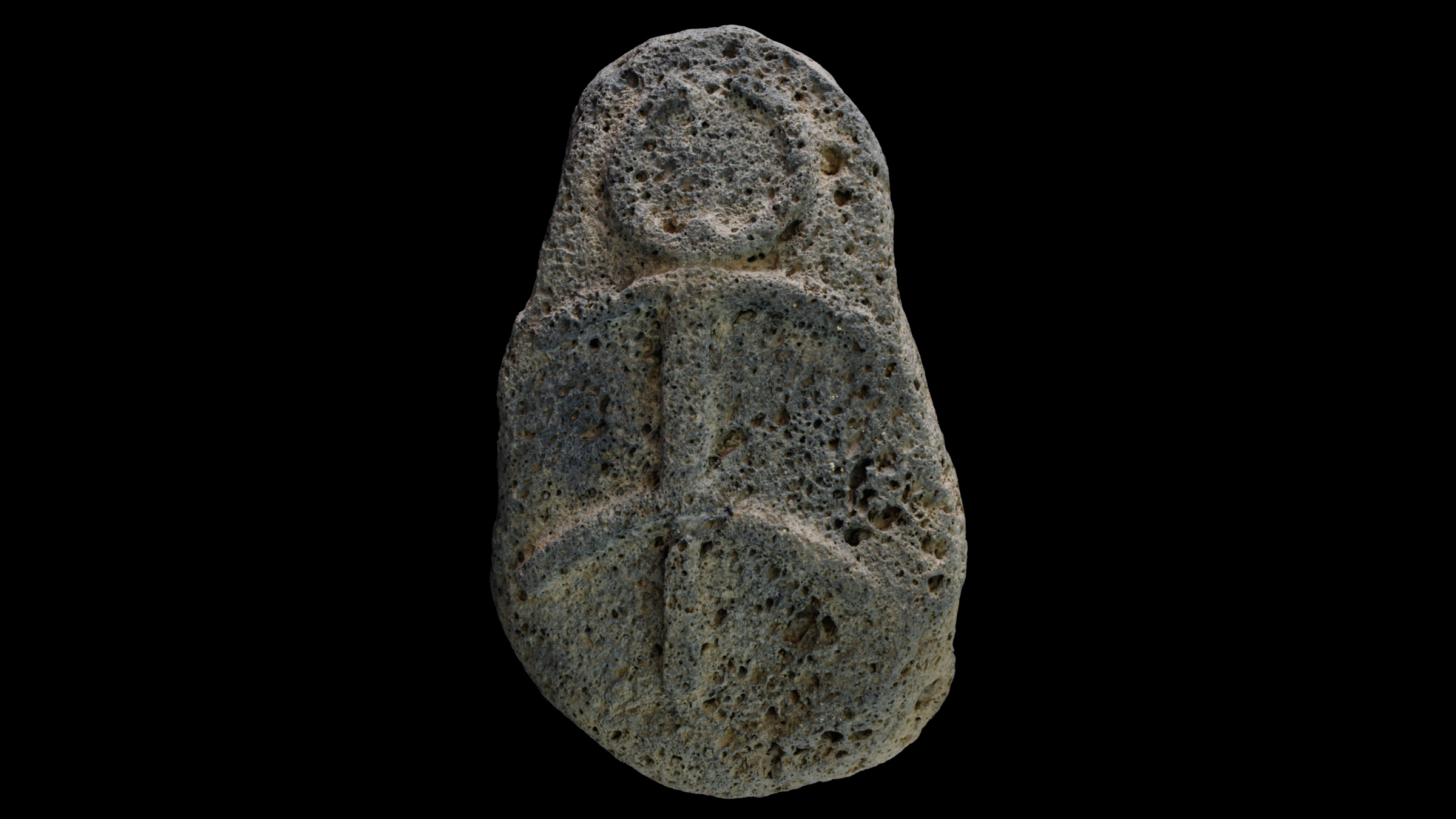
A 3,000-year-old fort containing a carving of mysterious horned figures has been discovered in the Golan Heights. And it may have been built by the kingdom of Geshur, an ally of the Israeli King David.
It sits on a small hill overlooking a river crossing. Israeli archaeologists discovered the structure while surveying the area where a new neighborhood is being built in the settlement of Hispin. (The Golan Heights was captured by Israel from Syria in 1967 and its status is disputed; Hispin is an Israeli settlement there.)
According to the Israel Antiquities Authority (IAA), the fort likely dates back to the 11th or 10th century B.C. It consists of basalt-boulder walls nearly 5 feet (1.5 m) wide. Among the ruins were beads, ceramics, a ring and part of a broken figurine of a woman holding a drum. But the most exciting discovery within the fort was a large stone carved with two stick-like human figures with outstretched arms. The figures each sport two horns and seem to be standing next to an unknown object.
Related: Photos: Ancient rock art sheds light on Israel's 'Dark Ages'
This carving is reminiscent of another found at another ancient site called et-Tell on the north shore of the Sea of Galilee. In 2019, archaeologists discovered a single figure similar to the Hispin carving near the city gate at et-Tell. That stone was similar in age to the Hispin find, and it may represent a Mesopotamian moon god, archaeologists told Haaretz Magazine earlier this year. The horns on the carvings might represent bull horns, or they could be a depiction of the crescent moon on its side.
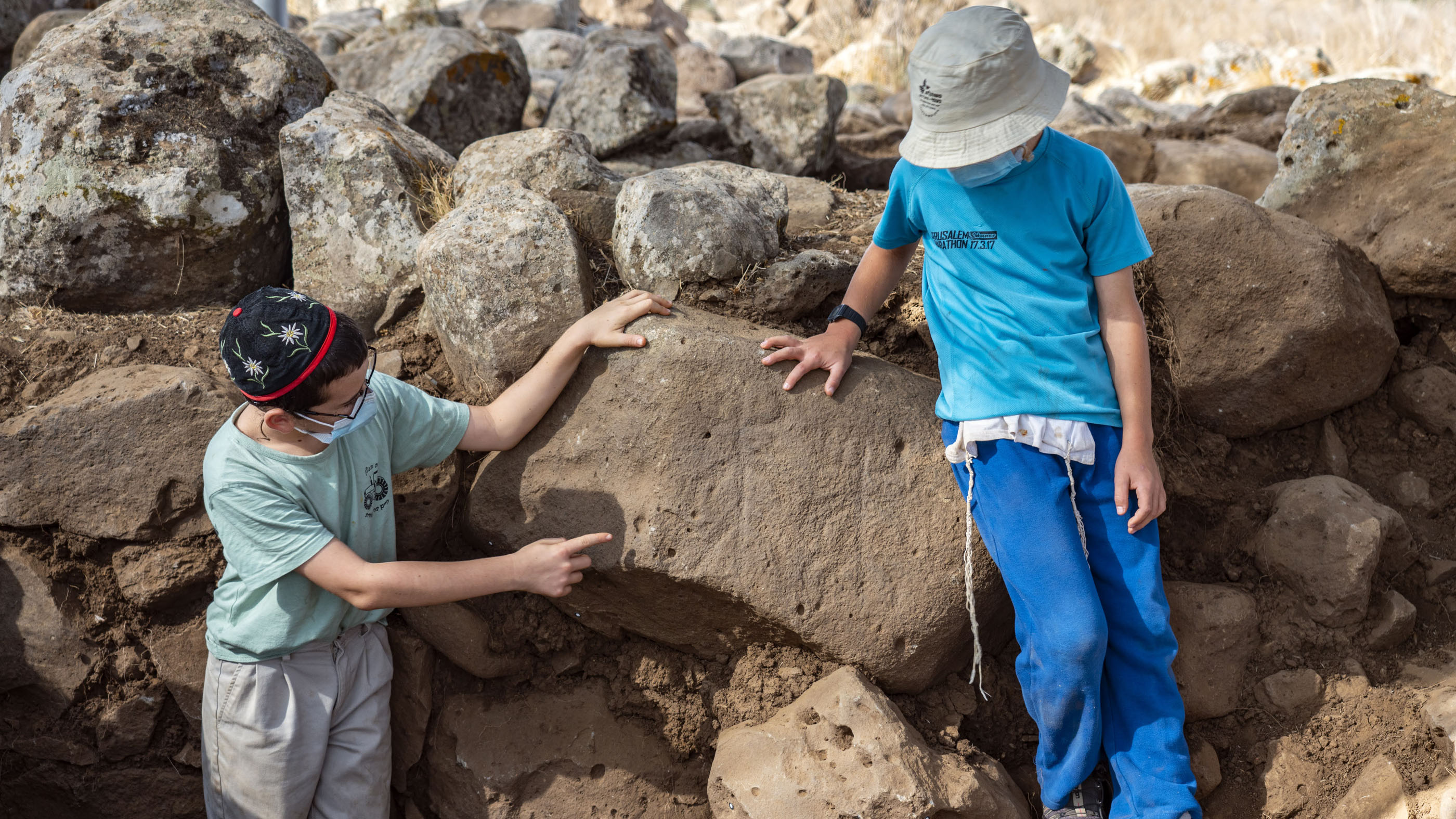
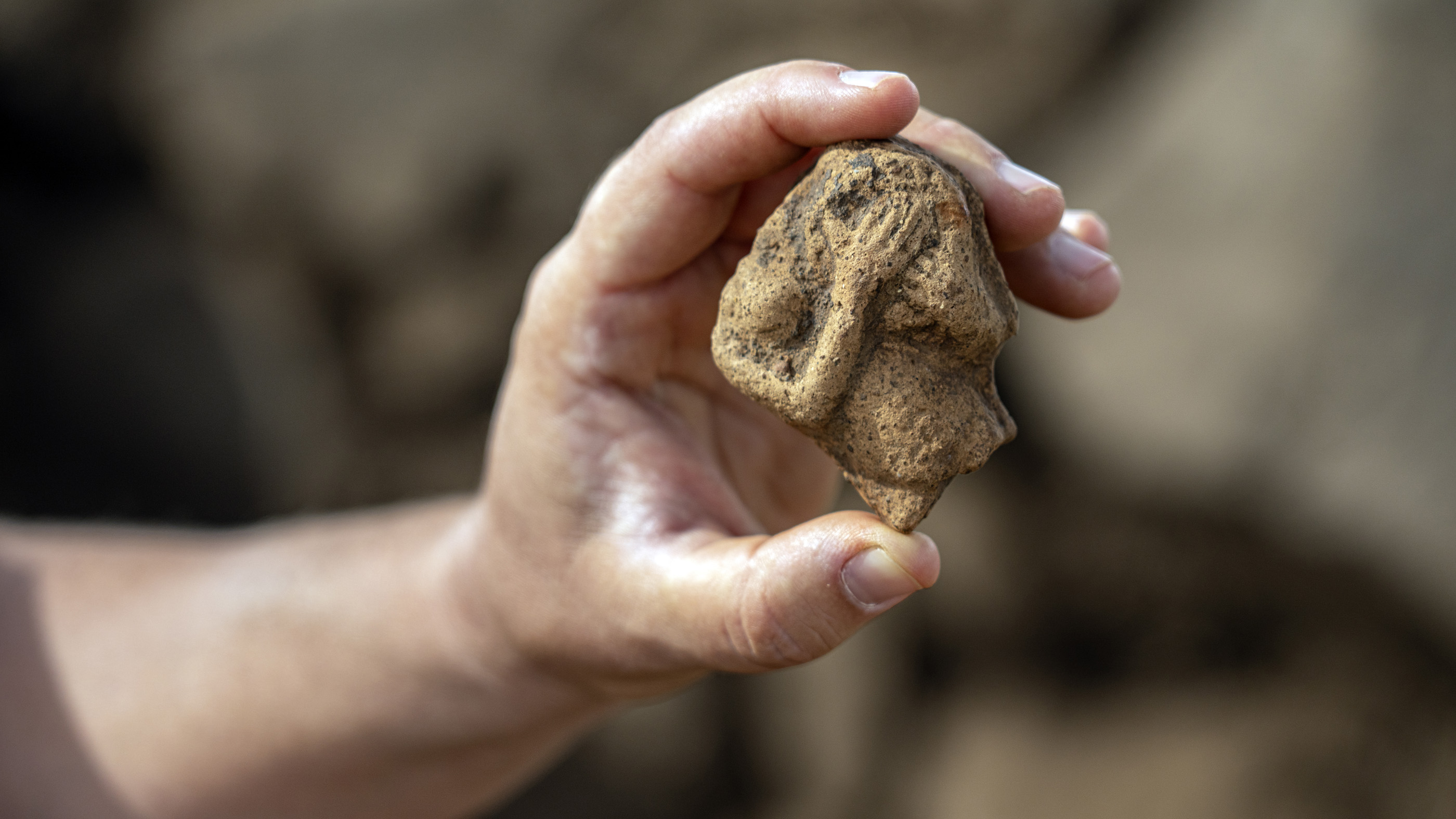
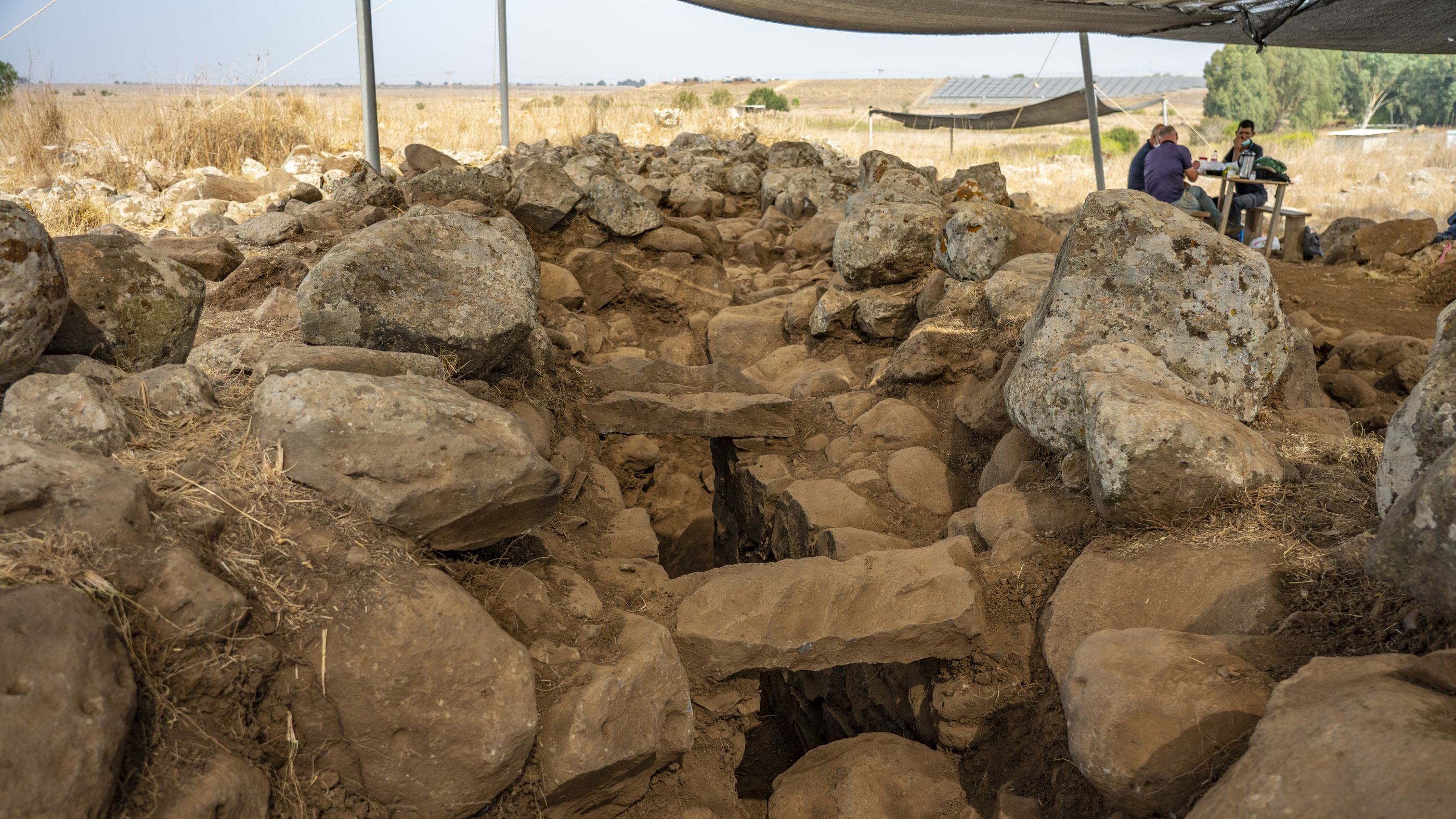
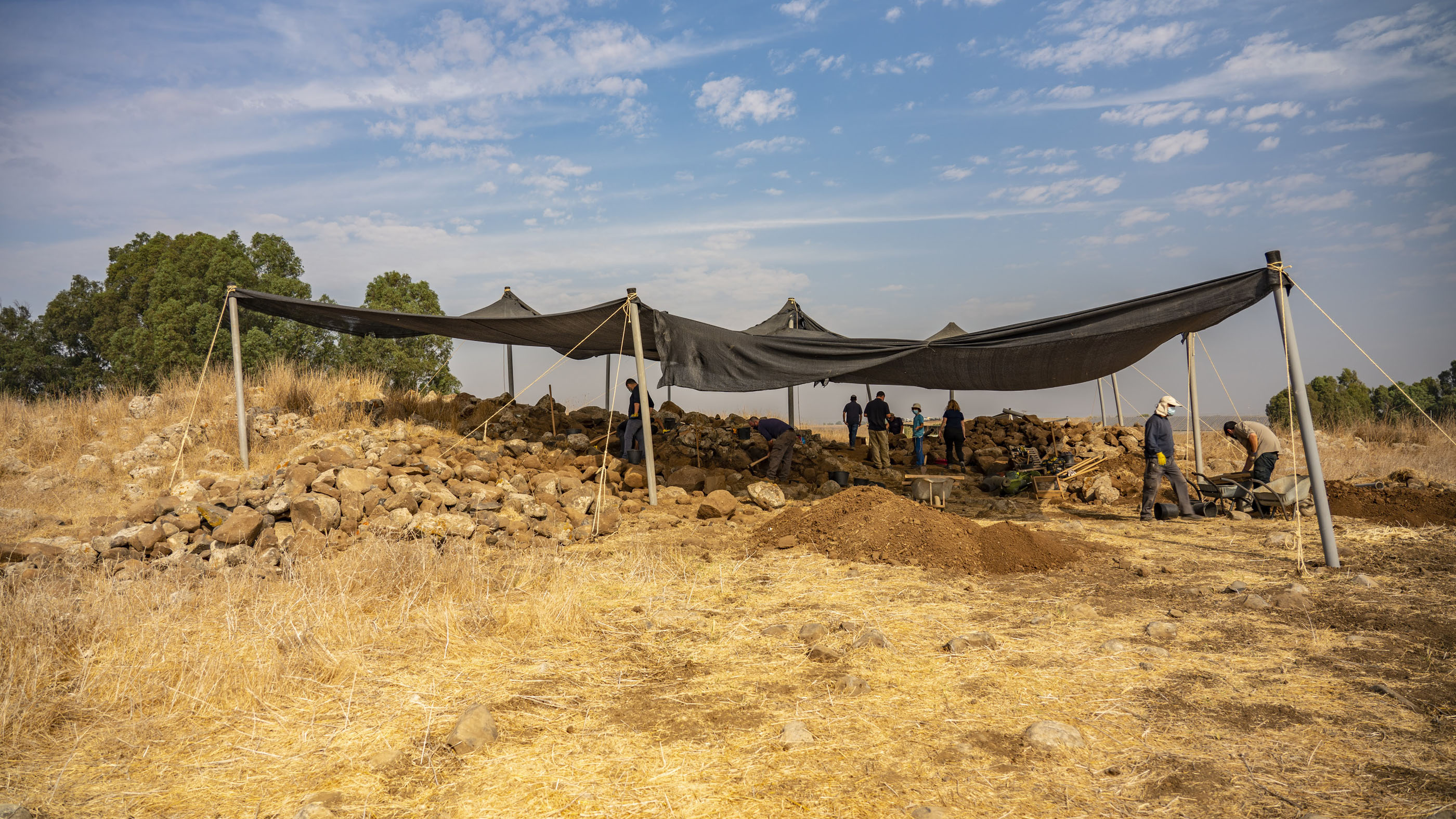

Exactly what et-Tell was called in ancient times remains a contested question, but some archaeologists believe it was Bethsaida, the capital of the kingdom of Geshur. If so, the carving found in the Golan Heights may have been a copy of the moon god stele at the city gates of the kingdom’s capital, IAA excavation directors Barak Tzin and Enno Bron said in a statement.
According to the IAA, most known Geshur archaeological sites are on the north shore of the Sea of Galilee with few known from the Golan region, which lays parallel to the sea to the east and northeast. The discovery of the Geshur site in this area raises new questions about the boundaries of the kingdom in the Iron Age.
Get the world’s most fascinating discoveries delivered straight to your inbox.
Geshur maintained close diplomatic relations with Israel, according to Jewish histories. One of the wives of the biblical King David was said to be Maacah, the daughter of King Talmi of Geshur.
The ancient fort will be turned into an open-air cultural site, according to the IAA.
Originally published on Live Science.

Stephanie Pappas is a contributing writer for Live Science, covering topics ranging from geoscience to archaeology to the human brain and behavior. She was previously a senior writer for Live Science but is now a freelancer based in Denver, Colorado, and regularly contributes to Scientific American and The Monitor, the monthly magazine of the American Psychological Association. Stephanie received a bachelor's degree in psychology from the University of South Carolina and a graduate certificate in science communication from the University of California, Santa Cruz.


